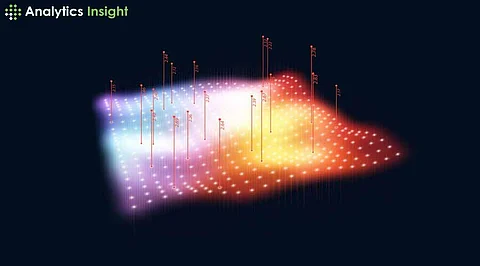

The explosive development of machine learning (ML) and artificial intelligence (AI) is changing industries worldwide. One of the driving forces of the change is the expansion of neural networks, a machine-learning model based on the architecture of the human brain.
These networks can process and learn from huge amounts of data, allowing machines to do things that were previously impossible. However, as these neural networks get more complex, the need for powerful hardware to handle them—specifically Graphics Processing Units (GPUs)—is growing.
Neural networks are a basic building block of deep learning, a branch of machine learning. They are composed of layers of nodes, or "neurons," that mimic how the human brain processes information. Neural networks can be trained to recognize patterns, make predictions, and even generate new content. With advancements in technology, neural networks are also growing more powerful and able to accomplish tasks like image recognition, natural language processing, and even self-driving.
The strength of these networks is that they get better with experience. By processing many data points and adjusting their internal weights, neural networks "learn" and improve with time. Such learning is computationally costly. The larger the body of data a network handles, the more processing power is required. This is where GPUs enter the picture.
Historically, CPUs were the hardware of choice to execute applications, including AI models. However, CPUs are optimized for general-purpose computations and thus become less effective in parallelism, which is needed for deep learning. Deep neural networks consist of millions of operations that must be performed in parallel. CPUs struggle with this because they are sequential execution optimized and do one thing at a time.
GPUs, which are suited for parallel processing, are the opposite. Initially developed to render graphics for video games, GPUs contain thousands of small cores capable of processing numerous operations at the same time. This makes them perfect for deep learning, where operations such as training a neural network can be accelerated significantly by processing numerous data points concurrently. In short, GPUs can process the enormous workloads necessitated by neural networks.
The greater the complexity of neural networks, the more computational power they demand. Large-scale AI models like GPT-3 need a lot of data and computational resources to be trained. For example, one extensive neural network must be trained on petabytes of data, which can take weeks or even days with a lot of computing power but is impossible without hardware optimized for computation.
More and more use of neural networks in healthcare, finance, gaming, and autonomous cars significantly accelerates the need for GPUs. In healthcare, AI-based models are used to diagnose medical images, forecast patient outcomes, and even find new drugs. In finance, AI is being used to identify fraud, maximize trading strategies, and automate customer support. Self-driving cars depend on neural networks to analyze sensor data and make real-time decisions.
When these sectors implement AI, they require processing power to stay at pace. This has spawned a boom in the GPU business. Businesses producing GPUs, such as NVIDIA, AMD, and Intel, have experienced enormous growth as they deliver the hardware demands for AI. The GPU industry is expected to keep growing as AI becomes an ever-more integral part of modern technology.
In the future, the association between neural networks and GPUs will continue to intensify. Neural networks will become more sophisticated and powerful, and the hardware used to support them will have to stay ahead. This will likely further fuel innovations in GPUs as companies put forward their best to produce more efficient and powerful chips that meet AI requirements.
Specialized AI Chips: The creation of custom-made chips, especially the Tensor Processing Units by Google, and others in the field of custom hardware, shows that the future of AI is no longer strictly reliant on GPUs. These dedicated chips are optimized for machine learning operations and might further speed up the creation of neural networks.
Neural networks have been a revolutionary AI driver, allowing machines to carry out activities previously thought to be the domain of human cognition. However, their evolution has been accompanied by an exponential increase in computational demand, making GPUs an integral part of today's AI technology.
Neural networks will continue to mature and power innovation in industries. The need for GPUs will only continue to increase with the future of artificial intelligence looking bright, with GPUs leading the charge.
